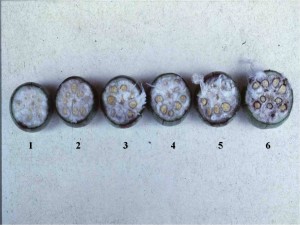Defoliation Timing
go.ncsu.edu/readext?245509
en Español / em Português
El inglés es el idioma de control de esta página. En la medida en que haya algún conflicto entre la traducción al inglés y la traducción, el inglés prevalece.
Al hacer clic en el enlace de traducción se activa un servicio de traducción gratuito para convertir la página al español. Al igual que con cualquier traducción por Internet, la conversión no es sensible al contexto y puede que no traduzca el texto en su significado original. NC State Extension no garantiza la exactitud del texto traducido. Por favor, tenga en cuenta que algunas aplicaciones y/o servicios pueden no funcionar como se espera cuando se traducen.
Português
Inglês é o idioma de controle desta página. Na medida que haja algum conflito entre o texto original em Inglês e a tradução, o Inglês prevalece.
Ao clicar no link de tradução, um serviço gratuito de tradução será ativado para converter a página para o Português. Como em qualquer tradução pela internet, a conversão não é sensivel ao contexto e pode não ocorrer a tradução para o significado orginal. O serviço de Extensão da Carolina do Norte (NC State Extension) não garante a exatidão do texto traduzido. Por favor, observe que algumas funções ou serviços podem não funcionar como esperado após a tradução.
English
English is the controlling language of this page. To the extent there is any conflict between the English text and the translation, English controls.
Clicking on the translation link activates a free translation service to convert the page to Spanish. As with any Internet translation, the conversion is not context-sensitive and may not translate the text to its original meaning. NC State Extension does not guarantee the accuracy of the translated text. Please note that some applications and/or services may not function as expected when translated.
Collapse ▲We often use percentage open bolls or nodes above cracked boll to determine when to defoliate cotton. With either technique, it is a good idea to cut some of the younger bolls to ensure that the crop is mature and ready to defoliate.
These bolls are first position bolls from the same plant. The youngest boll on the left was at the top of the plant and the others were one node below each other down the plant. The bolls on the left are not mature. Defoliation of these bolls would result in reduced yields and reduced micronaire. The bolls labeled 5 and 6 are mature and defoliation would not result in reduced yields. If you youngest bolls in a field were similar to the boll labeled number 4 you would probably not reduce yields by defoliating the field. Notice that the more mature bolls on the have a seed coat that is turning dark and easy to distinguish. The cotyledons in the middle of the seed are firm and well-formed.



